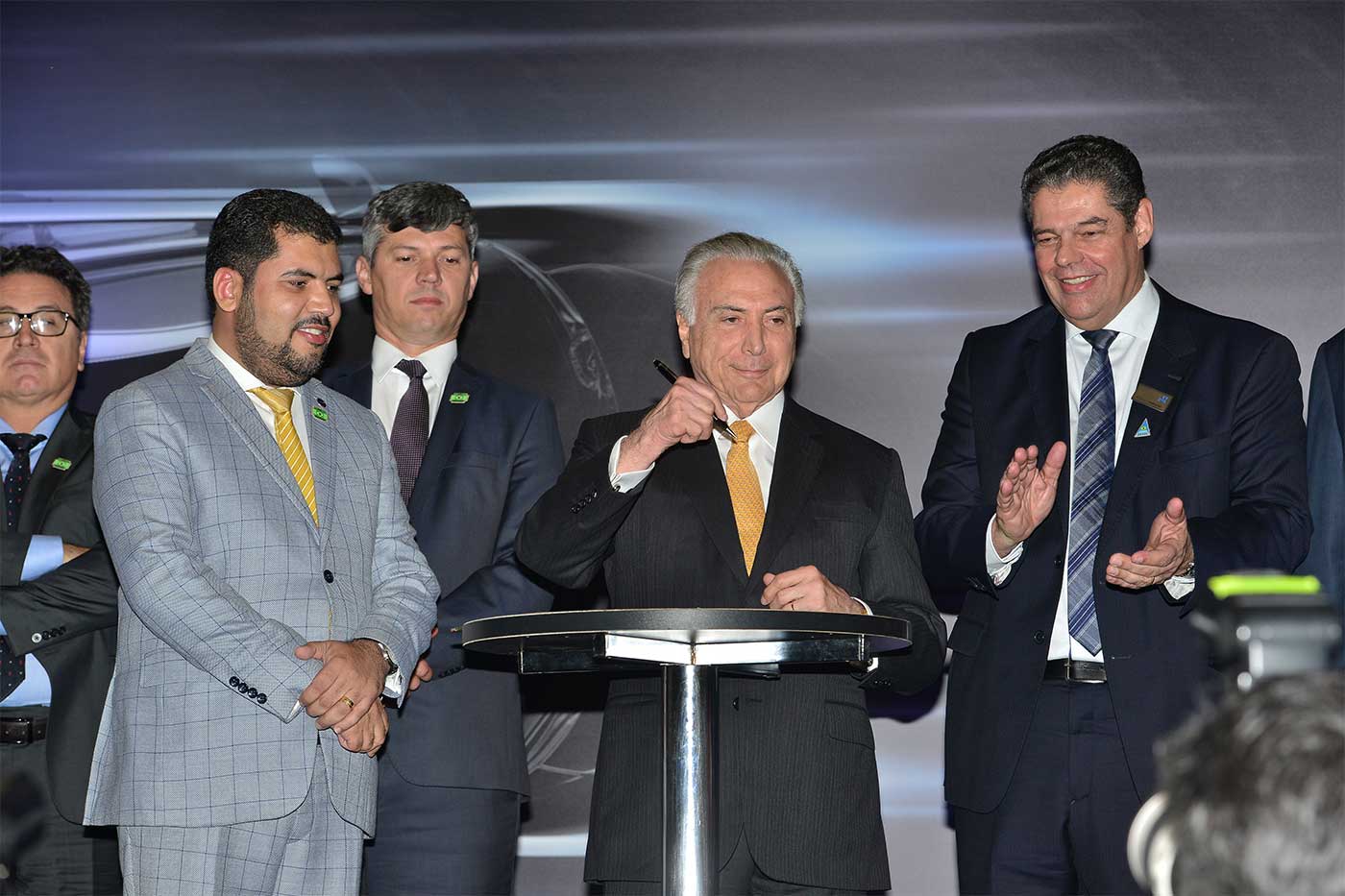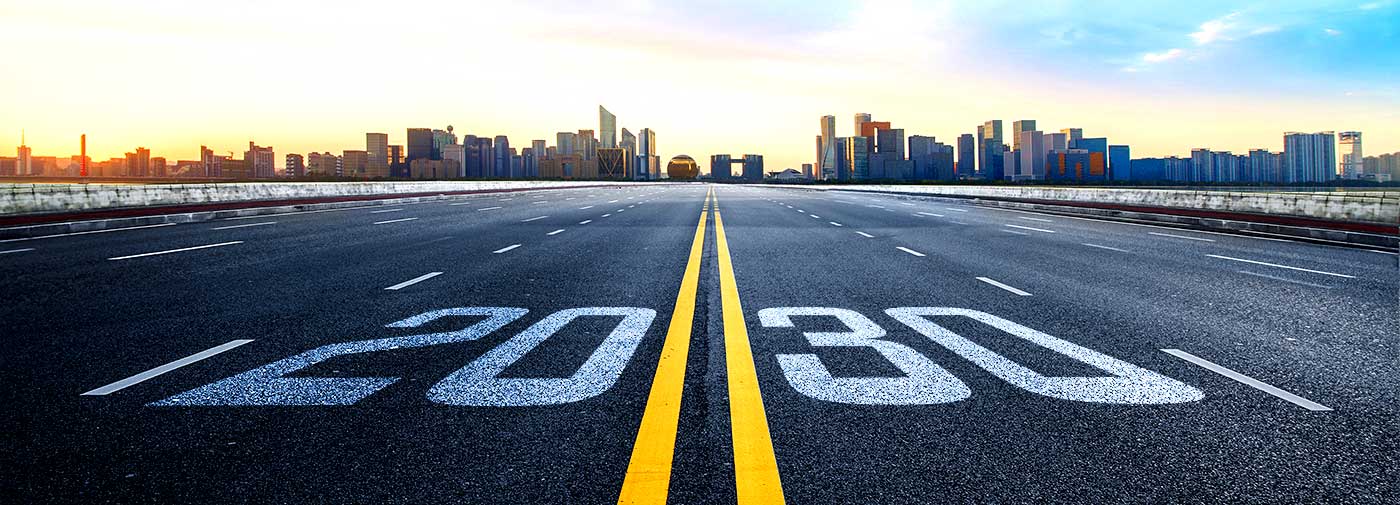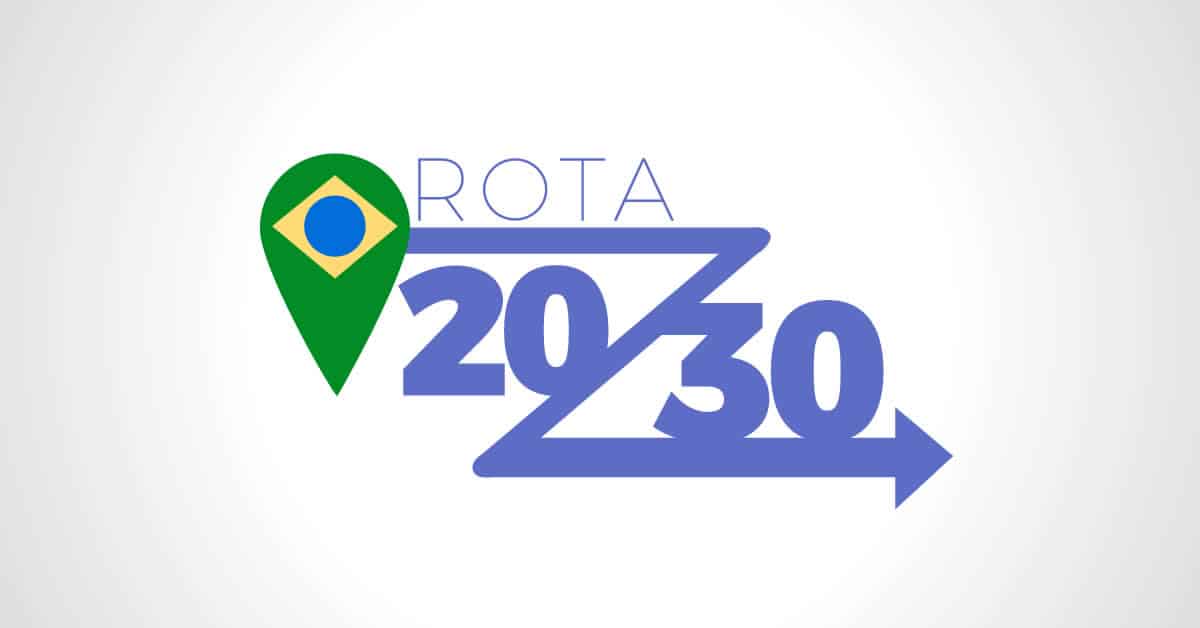WHAT IS THE PROGRAM ROTA 2030?

President Michel Temer, alongside the then President of ANFAVEA Antonio Megale (right), signs the Rota 2030 decree at the opening of the 2018 Motor Show
More than a continuation of the Inovar-Auto (effective from 2013 through 2017), the Program Rota 2030 – Mobility and Logistics – advances in essential areas for developing technologies not only for vehicles but also to improve the industry and management.
Instituted through Decree 9,557 on November 8, 2018, the Rota 2030 establishes norms that, besides the reduction of greenhouse effect gases emission, aim to increase safety (with the introduction of new technologies) and improve national automobile competitiveness.
The Rota 2030 has three pillars or, in the words of Henry Joseph Jr., Anfavea’s technical director, “it’s three programs in one”. One of the pillars establishes three mandatory requirements for vehicle sales in Brazil: to participate in the Inmetro Labeling Program; proof of a minimum energy efficiency level; and proof of a minimal level of structural performance and incorporation of safety assistance technologies.
The other two pillars are volunteers but, like the previous one, include compensations as tax incentives. The first grants an Income Tax discount for companies investing in research and development. The second zeroes the Import Tax for manufacturers who import parts without national similar if they invest 2% of the amount imported in research, development and innovation projects through institutions capacitated to manage these resources. Check each pillar for more detail:

1 – Energy efficiency and vehicle safety
Those are two distinct obligations:
1) participate in the INMETRO – PBEV Labeling Program
2) to meet a minimal level of energy efficiency with the average efficiency of the vehicles commercialized in 12 months
The first pillar defines the minimal requirements demanded to commercialize vehicles in Brazil. For this, three criteriums must be fulfilled:
- All vehicles, including light and heavy ones, must participate in the Brazilian Program of Vehicular Labeling (PBEV), an Inmetro table that classifies vehicles according to energy efficiency and informs fuel consumption and CO2
- 2) To meet a minimal level of energy efficiency with the average efficiency of the vehicles commercialized in 12 months. The first phase is foreseen for October 2022 and establishes an 11% fuel consumption reduction compared to the levels achieved with the Inovar-Auto, in effect in 2017.
For a light vehicle manufacturer whose commercialized vehicles average mass is 1,121 kg, the energy efficiency goal is 1.62 MJ/km. Off-road models and SUVs with a projected area over 8 m² belong to another category. In this case, the goal for a manufacturer with an average commercialized mass of 1,564 kg is 2.04 MJ/km. There is also a third category for light commercial vehicles over 1,564 kg. For a manufacturer of these models whose average commercialized vehicle mass is 1,915 kg, the objective is 2.68 MJ/kg.
The program foresees a 1 percentual point IPI bonus for manufacturers surpassing the goal by 5.5%. The incentive is 2 percent points if the goal is over by 10.5%. In case the levels are not accomplished, there is a R$ 50.00 fine for each 0.01 MJ/km over the mandatory average, multiplied by the number of commercialized vehicles since the beginning of the Program.
The energy efficiency evaluation criteria for heavy vehicles are based on the European program Vecto (Vehicle Energy Consumption Calculation Tool), in effect since 2019, to check consumption and CO2 emissions. The first cycle ends this year. The second cycle goes from 2023 through 2027, while the third begins in 2028 and ends in 2032.
Apart from the energy efficiency labeling, it is foreseen for a second moment the same system to classify vehicle safety, according to which it will be needed to meet a minimum level of requirements established according to Contran’s rules.
In this case, the Program Rota 2030 addresses themes related to structural performance and driver assistance technologies. The manufacturer should add some items each year, divided into three groups.
In 2022, manufacturers and importers shall adopt at least 65% of the Group A devices. The percentage goes to 75% in 2023. After that, the increase is five percentual points each year through 2026.
Vehicles equipped with 100% standard Group A items and at least six items from the B or C Groups may get an IPI reduction of one percentual point since they meet the energy efficiency objective. The discounts are non-cumulative with those of the IPI.
One of the objectives of the safety technology emphasis is to reduce or even eliminate the difference in regulation regarding other countries, especially those from South America.
With the staggering adoption of these devices, the companies can have a better previsibility and be able to synchronize with the neighboring branches a joint adoption of systems, generating production scale gain and more product interchangeability among the countries.
Although Brazil has an energy matrix diverse from its neighbors (such as ethanol), we are on a fast course toward a common homologation in the main Latin American markets considering the regulatory safety demands. According to Henry Joseph Jr., this was not the original intention of the Rota 2030 but was a “positive side effect that is useful to improve the export capacity” for allowing an easier product interchange.


2 – Research and development incentives
The Rota 2030 also foresees tax incentives for companies investing in research and development. In this case, it is possible to deduct from the Income Tax the values corresponding up to 30% of the expenses incurred in the country for this aim from a minimum amount based on the gross operating income.
The program divides manufacturers and importers into three categories (light and heavy vehicles and auto parts). Considering light vehicles, for example, the minimum investment was established as 0.5% in 2018, and after that, it gradually increased. For 2022 and 2023, it is 1.2%. The auto parts segment follows the same values. For heavy vehicles, the investment is lower (0.75%).

3 – Autoparts regimen
The third part of Rota 2030 refers to the tax regimen for auto parts produced abroad. Instead of paying the import tax, companies included in the Siscomex (Sistema Integrado de Comércio Exterior – Integrated Exterior Commerce System) can use 2% of the amount of the custom for local research and development through independent institutes geared towards the automotive sector.
The program has already collected more than R$ 900 million in three years. The resources are managed by four organizations: Senai (Serviço Nacional de Aprendizagem Industrial), Embrapii (Associação Brasileira de Pesquisa e Inovação Industrial), Fundep (Fundação de Desenvolvimento da Pesquisa) and Finep (Financiadora de Inovação e Pesquisa). These organizations’ function is to direct the resources to research and development institutes, technology centers and universities all around Brazil to finance pre-approved works according to defined criteria.
The importer company can decide where to invest the amount but has no control over which institution will receive it. It is possible to channel resources toward areas such as tooling (tools and molds), vehicle safety, biofuels and drive systems (categories under Fundep responsibility), mobility and logistics (Embrapii) and leverage of alliances for the automotive sector (Senai).
Besides these areas, it was also created a vehicle connectivity development line. It includes autonomous vehicles, connectivity not only inside the vehicle but also communication between vehicles and infrastructure, as well as other related activities, such as data safety, integrated mobility solutions, etc.